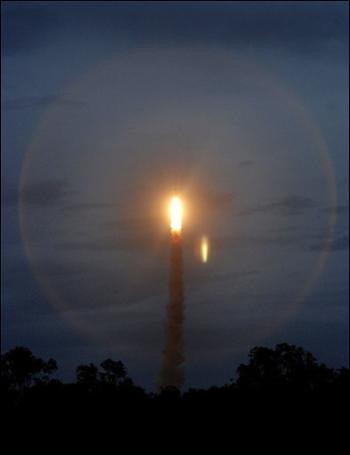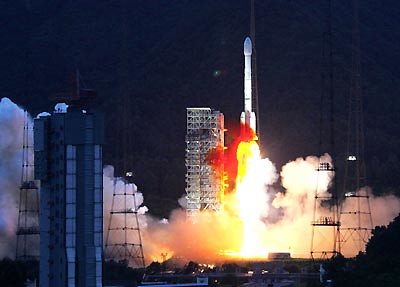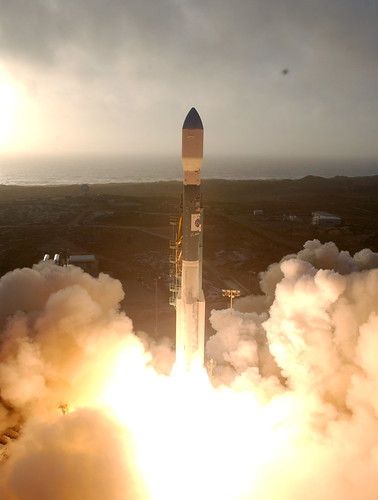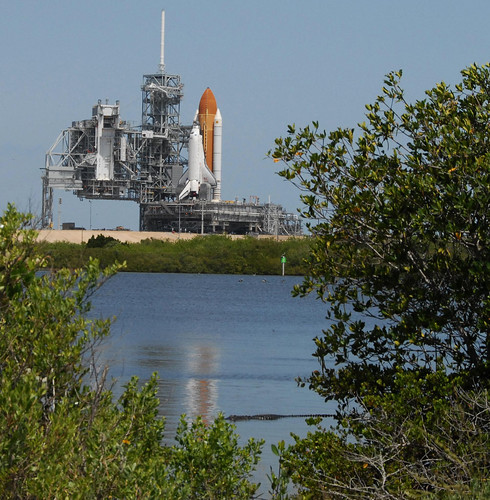If you ever read Jules Verne’s From the Earth to the Moon, you’ll recall that it’s the story of three wealthy members of a gun club who build a huge cannon and shoot themselves to the moon.
In writing the novel, Verne did a number of calculations to determine how a space gun would work. Although his figures proved to be surprisingly accurate, space guns have since been ruled as a means of manned space flight because the accelerating forces (up to 2,000 Gs!) are too powerful for any living thing to survive.
But now, a group of graduate students and academics hopes to use a similar concept to launch low-cost satellites into orbit.

Space Review reports:
Ben Joseph, a 25-year-old aerospace engineering graduate of MIT, and a team of students and professors are resurrecting [the space gun idea… with] a radically new kind of impulsive launch technology known as the “ram accelerator.”
Joseph and his colleagues have formed a company called Ballistic Flight Group, with the goal of commercializing the space gun launch concept for satellites:
A typical artillery weapon uses a large explosive force at the base of a gun to propel a shell down a rifled metal tube, which is angled to provide the projectile with its trajectory.
In the space gun launcher being promoted by BFG this cannon type of firing is merely the first step in the process. The main step is the ram accelerator, a technology invented and developed by faculty and staff at the University of Washington in Seattle, where Ben Joseph studied as an undergraduate. After a pre-launcher gun (e.g., light gas or gunpowder propelled) accelerates the projectile up to speeds of over 500 meters per second, the projectile enters the ram accelerator by passing through a breakable diaphragm and entering another tube, this one filled with a more volatile propellant, such as oxygen and methane. Because the projectile enters this second tube at supersonic speeds, it interacts with the tube wall to produce a ramjet–like effect inside the barrel. This ramjet effect forces the projectile to combust the fuel behind it, increasing its acceleration through the tube. The projectile exits the barrel with a muzzle velocity of around 8 kilometers per second. An upper stage rocket would circularize the trajectory of the payload (approximately one third of the projectile’s 2,000-kilogram mass) to a low Earth orbit of around 800 kilometers….
So that’s the technology, as envisioned. What about the cost?
What makes the ram accelerator so appealing is its economic potential. BFG estimates that the accelerator could be built for an estimated $157 million, a price tag that includes the launch tube and its supports, the pre-launcher gun for initial acceleration, and propellant handling system for the oxygen, hydrogen, and methane gases for the ram accelerator portion of the launch system. This price tag is astonishingly low—cheaper than some expendable rockets—and it could be fired hundreds or thousands of times. Depending on the gun’s final muzzle velocity, prices for payloads could drop to nearly $500 per kilogram, a drastic reduction from current market prices…
During Joseph’s presentation on the commerce track of the International Space Development Conference, he concentrated on the most obvious markets for the ram accelerator: commercial satellite launches. BFG has taken particular interest in the Iridium and Globalstar constellations, which were financial failures but technically viable. Those satellites are nearing the end of their service life, and the ram accelerator would reduce the costs launching new satellites to nearly one tenth of their projected value. At those prices, a large LEO constellation becomes financially competitive with a high-bandwidth satellite chain in geosynchronous orbit. This does not change the economics of human spaceflight, but it does represent the order-of-magnitude cost improvement NASA and the private sector has sought for over 20 years.
Whether a space gun or BFG’s efforts can deliver on the dream of low(er) cost satellite launches remains to be seen. We’ll keep you posted.





 DirecTV customers have been promised
DirecTV customers have been promised 


